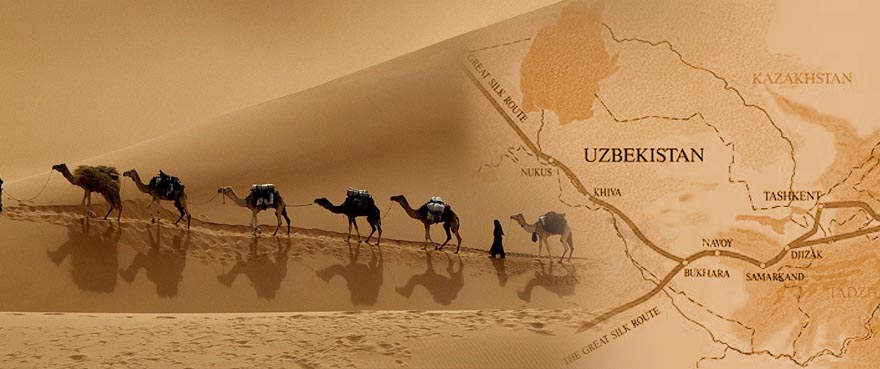Great Silk Road

The Silk Road was the biggest transcontinental trade route in the history of humanity, binding Europe and Asia. It stretched from antic Rome to the ancient capital of Japan, Nara.
Etymology of the Silk Road
As the name suggests, the main subject of trade on the caravan was silk. Silk was so valuable that in the early middle ages it became a popular calculation unit in Central Asia. In the ancient country of Sogdiana, the price of a horse was equated to the price of ten lengths of silk. The trade route was first called the Silk Road by Venetian merchant Marco Polo, who was the first European to reach the boundary of the Chinese empire. It became the roads commonly used name in 1877, when German researcher Ferdinand von Richthofen referred to it as such in his fundamental work “China.”
Central Asian Exports
The beginning of trade relations hastened the harvesting of semiprecious stones in Central Asia, like lapis lazuli, nephritis, cornelian, and turquoise which were valued in the east. There was the “lapis lazuli road" by which they delivered this stone from Central Asia to Iran and Mesopotamia and even to Egypt. There was the "nephritis road," which connected ancient regions of Khotana and Yarkent with Northern region of China. Moreover, Sogdiana and Baktria exported cornelian and Khorezm exported turquoise. All this routes joined the Silk Road. In addition to semiprecious stones, Central Asia exported camels, carpets, cotton fabrics, exotic fruits, fat-tail sheep, gun dogs, glass wares, gold and silver, gold-embroidered clothes, horses, leopards, leather, lions, and military equipment.
The End of the Silk Road
From the East, caravans brought chinaware, cosmetics, iron dishes, tea, and rice. In the traveling bags that merchants carried, you could find elephant tusk, rhinoceros horn, tortoise shell, and a motley mix of other goods. The great Silk Road also disseminated cultural wealth, religious ideas, and eventually conflict and crime. Traders began seeking sea routes from East to West, and over time, traffic on the Great Silk Road evaporated.
Future of the Silk Road
ADB projects in parts of Central Asia are attempting to rejuvenate the Silk Road, but for now visitors can find appreciation in the still visible architectural monuments of ancient Uzbek cities like Bukhara, Khiva, Shaxrizabs, Samarqand, Tashkent and Termez. They tell the unique history of the first trade relationship between eastern and western cultures.


